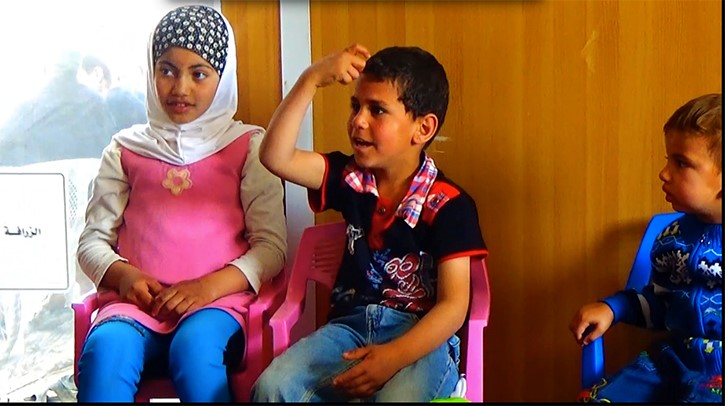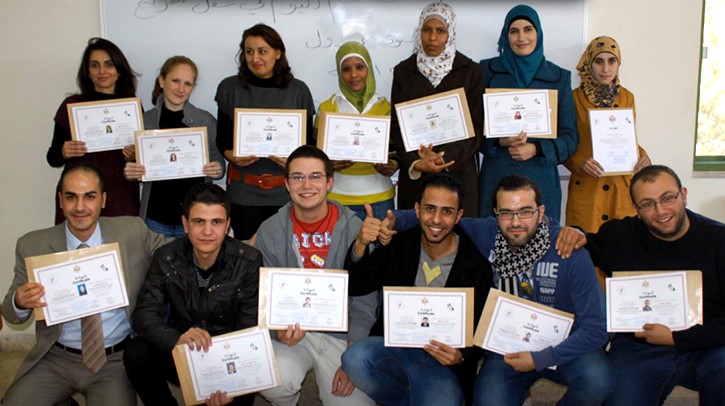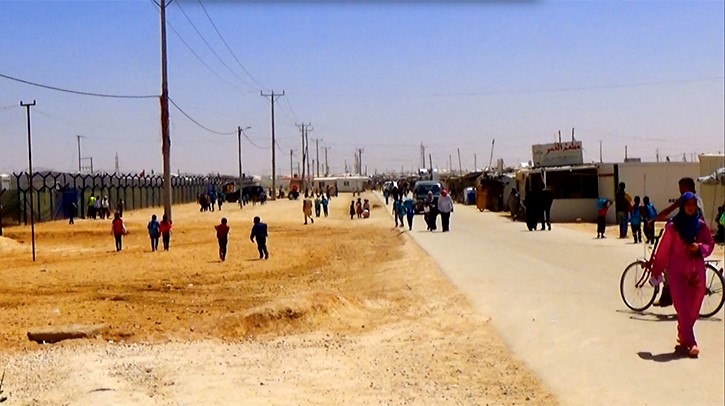Children with disabilities in Syrian refugee camp
Since 2013 the Holy Land Institute for the Deaf (HLID) has run a centre for children with disabilities in the Za’atari refugee camp on the Syrian – Jordan border. Children with disabilities become some of the most vulnerable people in the camp. Since work commenced at the centre more than 3,000 children, together with young and elderly people with hearing, visual or mental disabilities, have received help. Each day, 75 children come into the centre to receive help with hearing devices, therapy, education and even just support and friendship from HLID staff and the centre’s 14 volunteers.
Six-year old Ibrahim is concentrating on his fingers. He imitates his teacher who is showing him how to make words with his hands as part of his sign language lesson.

Many of the volunteers live in the camp and are able to contribute the skills they used as teachers in Syria.

Facts and figures:
-
- The centre comprises 9 caravans;
- 75 children visit the centre daily;
- 14 trained Syrian volunteers from the camp work there: 7 for education, 7 for assessments, diagnosis and rehabilitation;
- 4 – 6 specialist staff from the Network of Jordanian disability-specific organizations visit the camp on a daily basis. 8 staff visit on a weekly basis or according to need;
- The HLID runs 2 cars daily and 1 van as required; A further van is needed to collect the children inside the camp;
Za’atari: the fourth largest ‘city’ in Jordan
Since civil unrest and military hostilities escalated in Syria five years ago, an estimated 1.4 million people have accepted the hospitality of their neighbours in Jordan, with many ending up at the Za’atari Camp. The camp began as a fenced-off strip of desert for an initial 38,000 Syrians with limited infrastructure and services. Today, it is home to over 170,000 Syrian refugees, making it the fourth largest ‘city’ in Jordan. Dreams, careers and lives are on hold given the troubles back home, and families share tents, kitchens and toilets across the camp in the daily challenges of survival. What was always meant to be a temporary resting spot has become a static and sombre place five years into the crisis.

‘Centre of hope’
Low budgets and stretched staff working in the camp mean that refugees with special needs are too often overlooked in the larger efforts. So many children with disabilities become the most vulnerable.
HLID first became concerned about the situation in 2012 and so made contact with agency representatives. No agencies in the Za’atari Camp offered disability programmes and so those children with hearing or visual impairments as well as physical, cognitive or neurological disabilities received no services or had no facilities. This meant that their participation in everyday life and education was all the more complicated. It also meant entire families were being affected. The ‘Network’, a coalition of Jordanian disability-related organisations, set up the Za’atari centre in 2013.
Nowadays it shows how a centre in a camp for Syrian refugees has become an opportunity for hope. It serves as both a bright social spot in the camp and as a school for children who might otherwise be overlooked.
Links: Blogpost: a centre of hope, by Episcopal relief and development.


